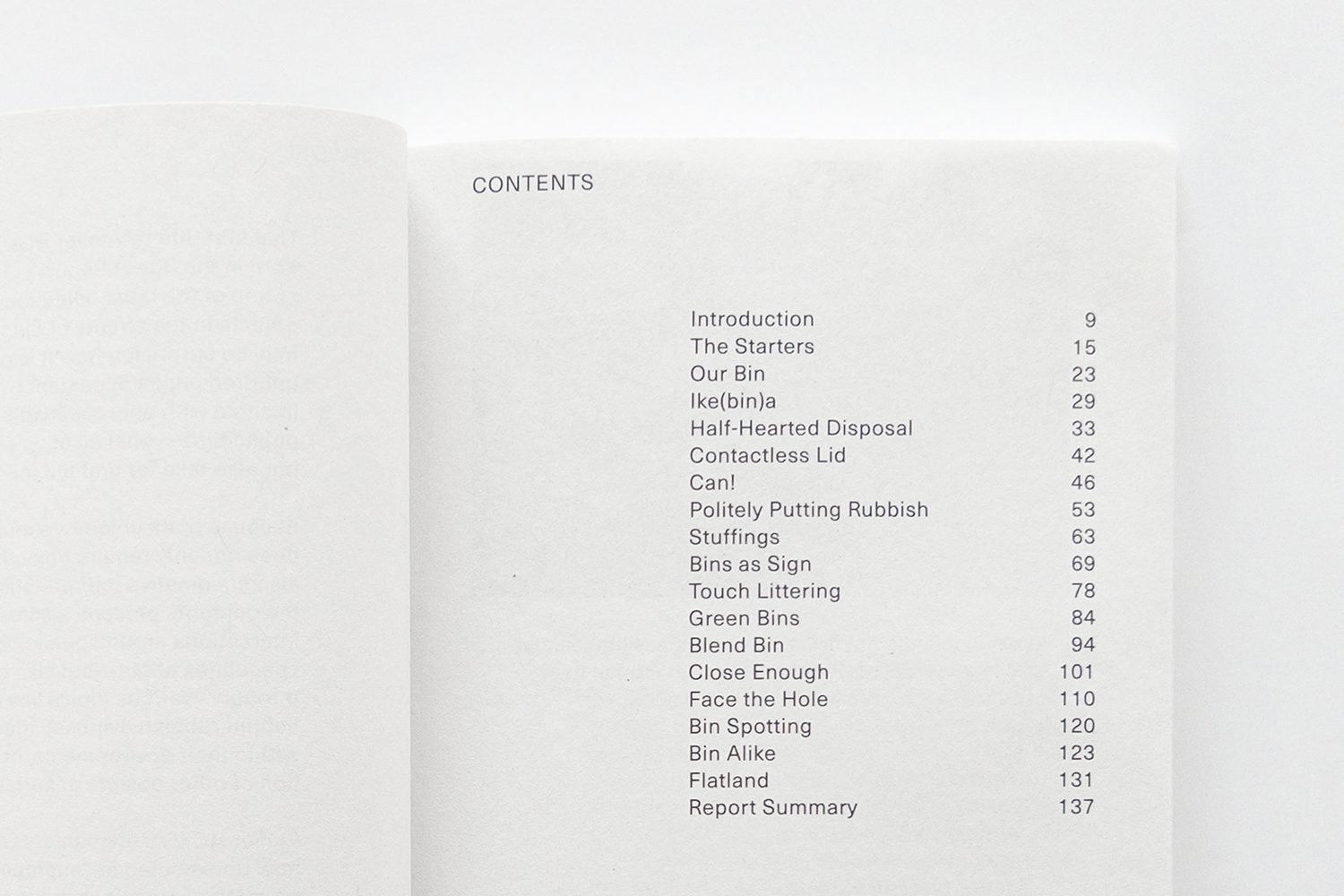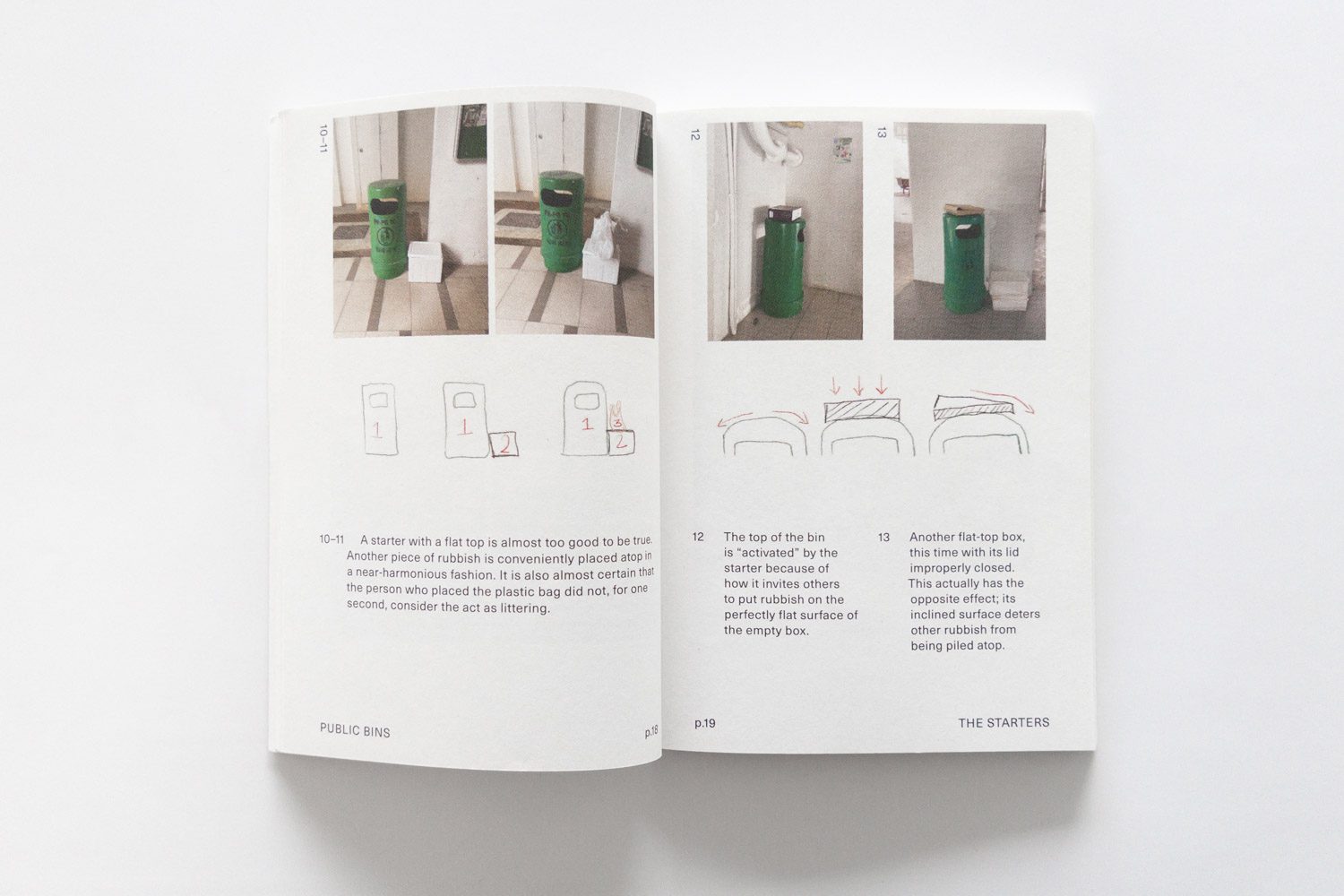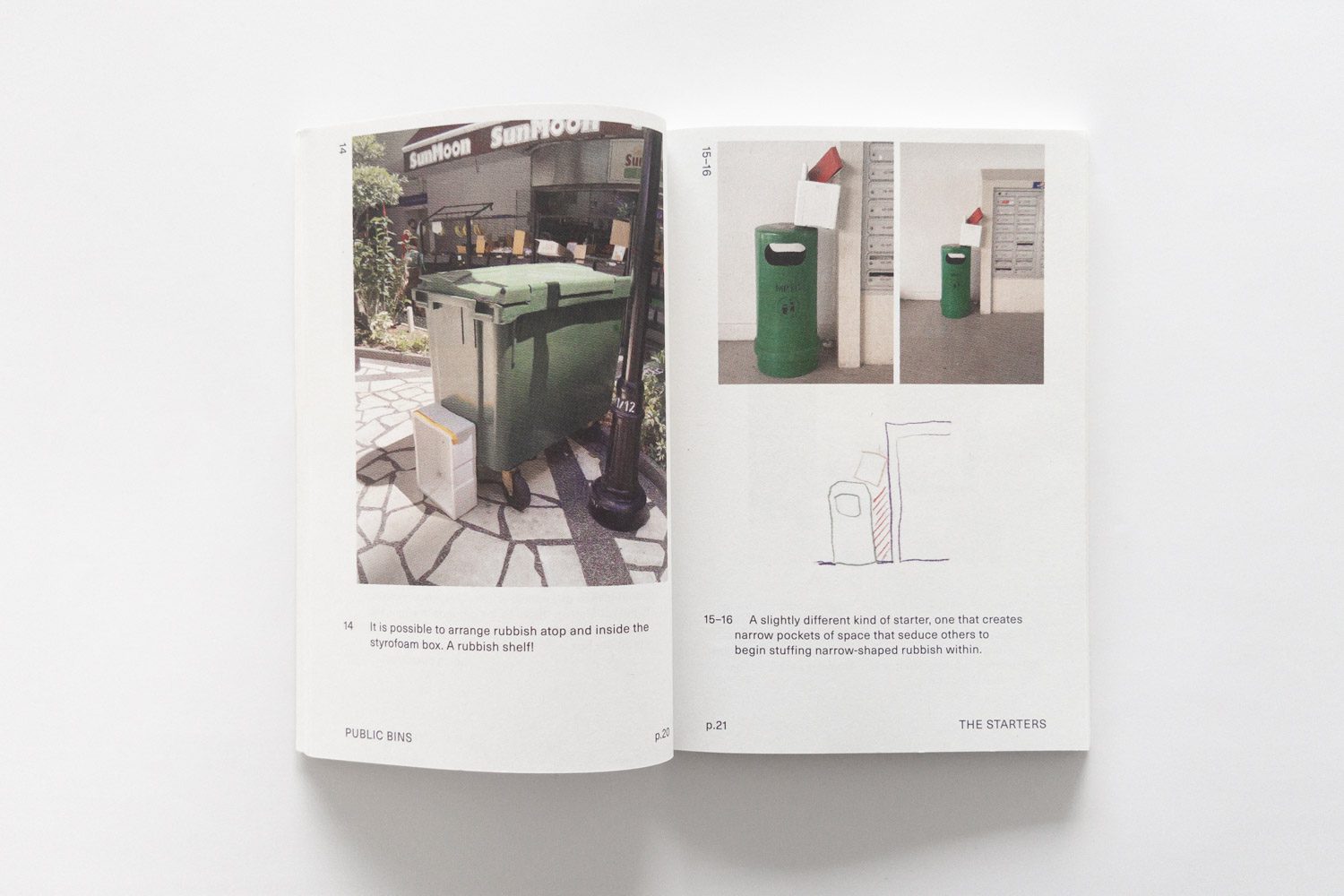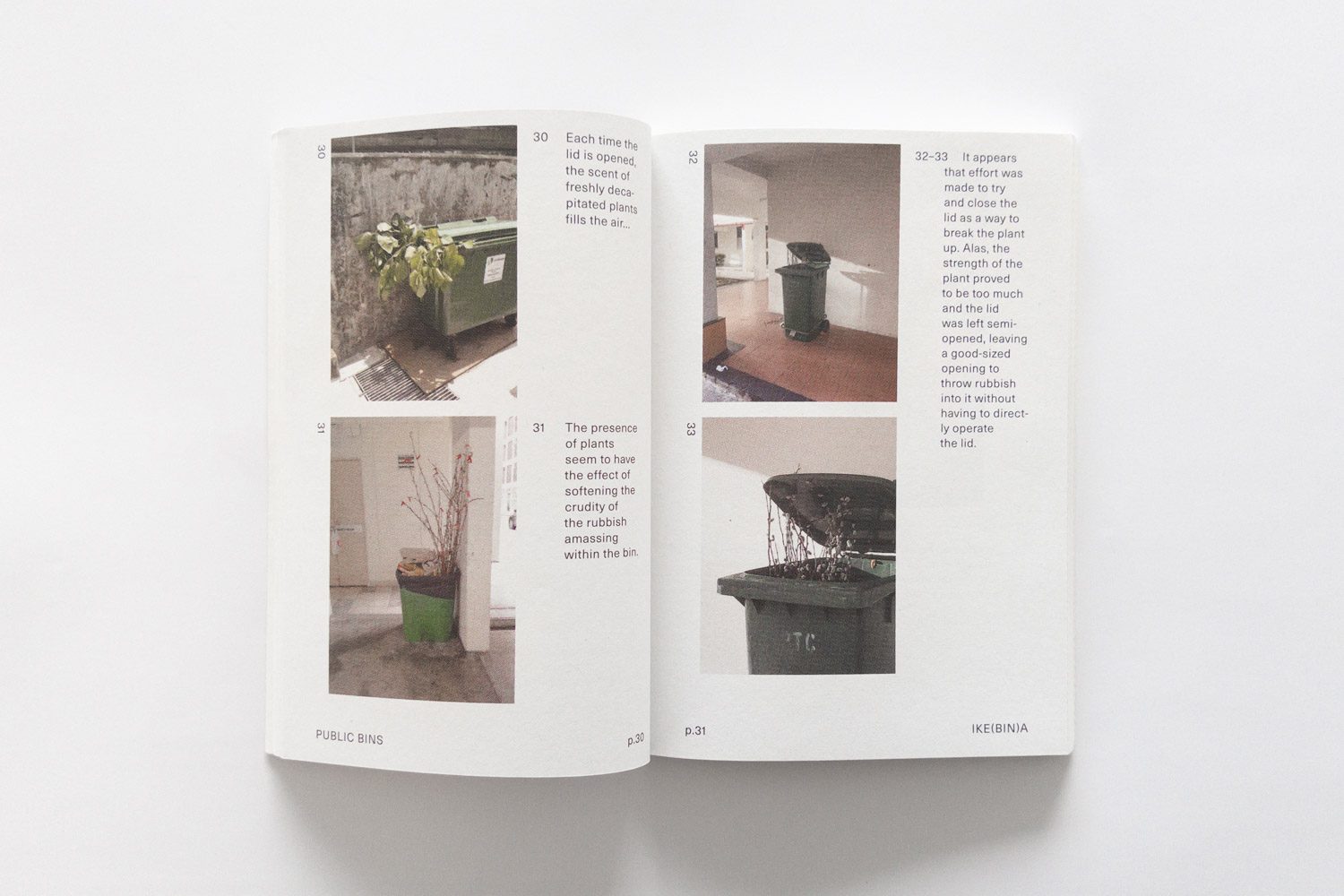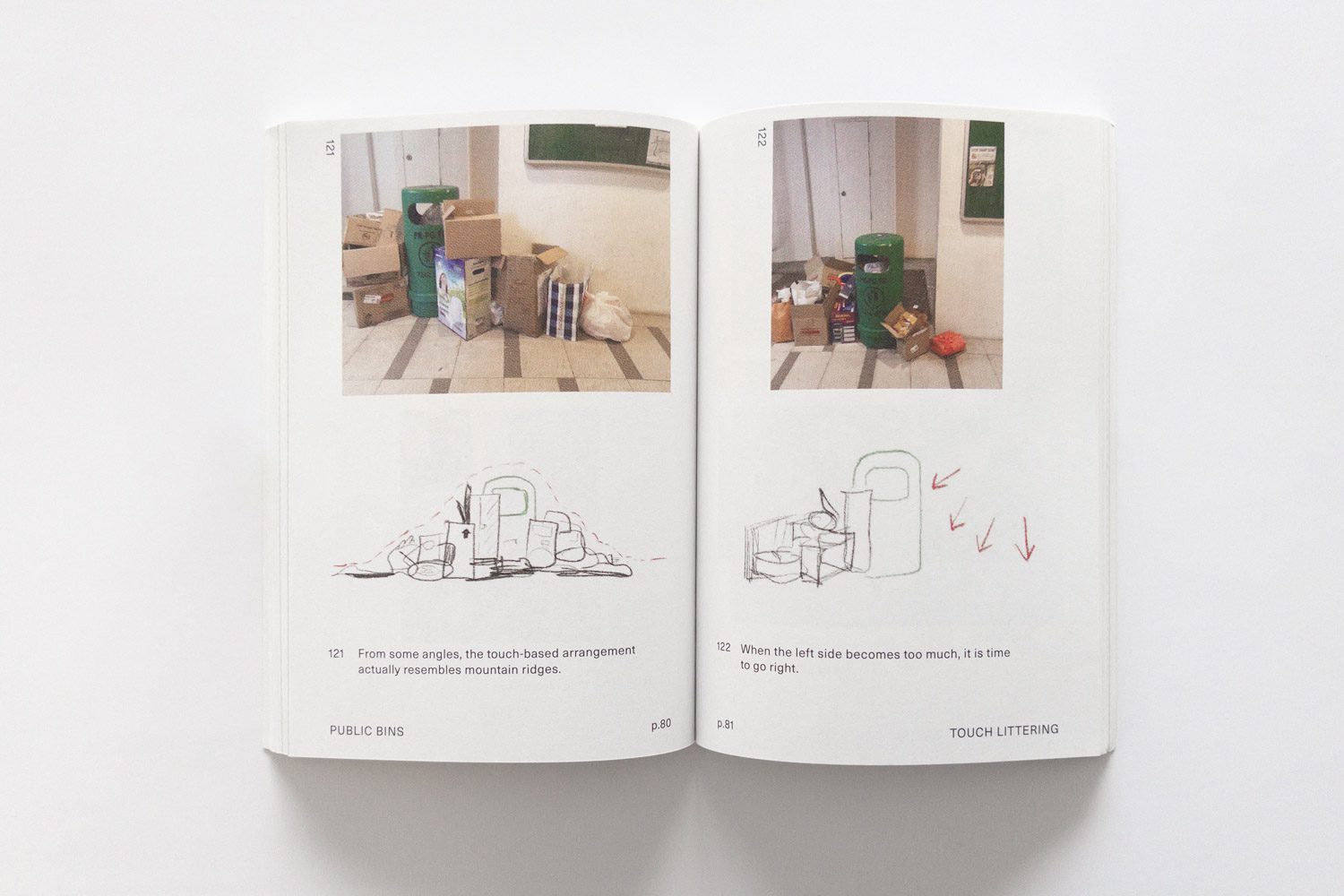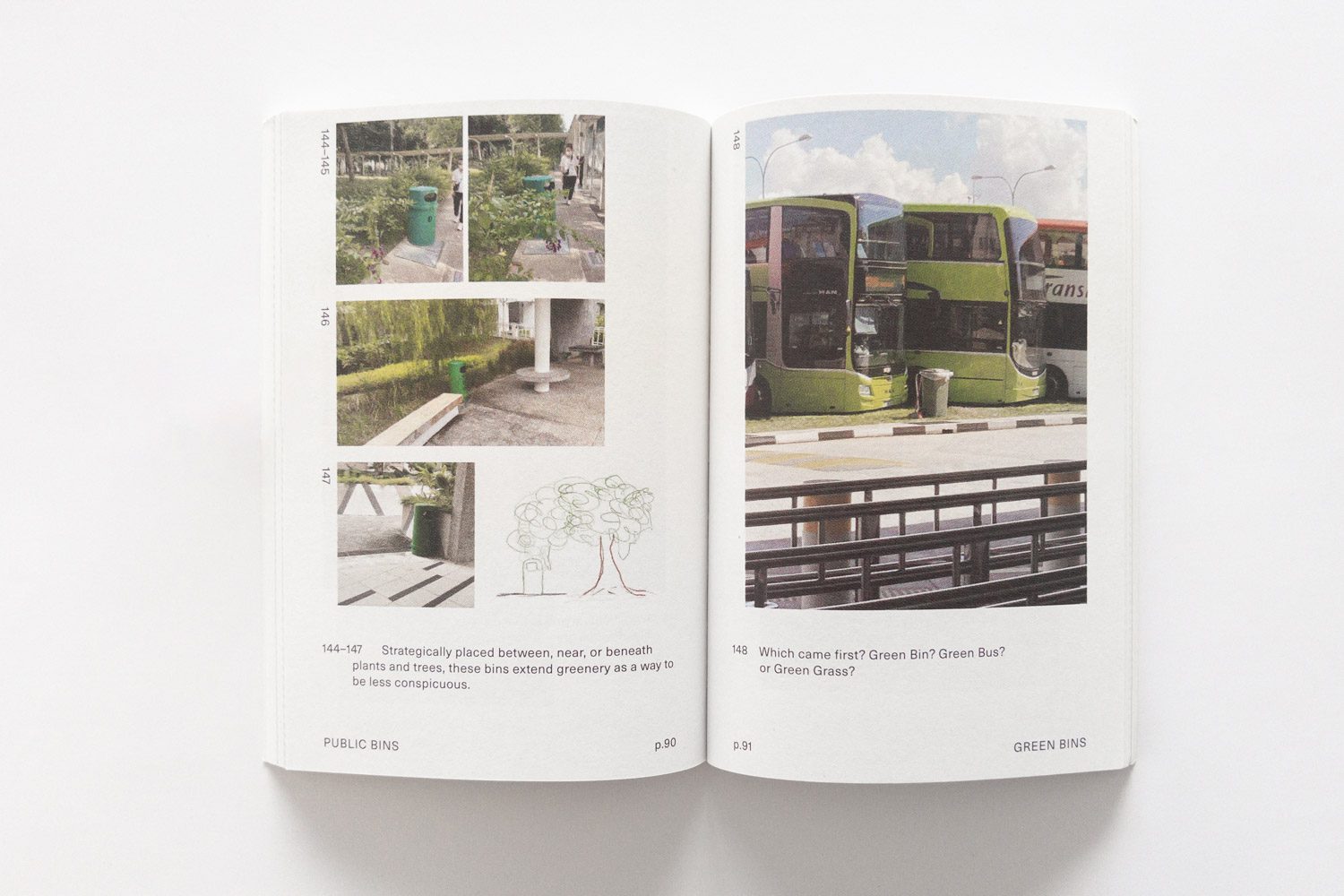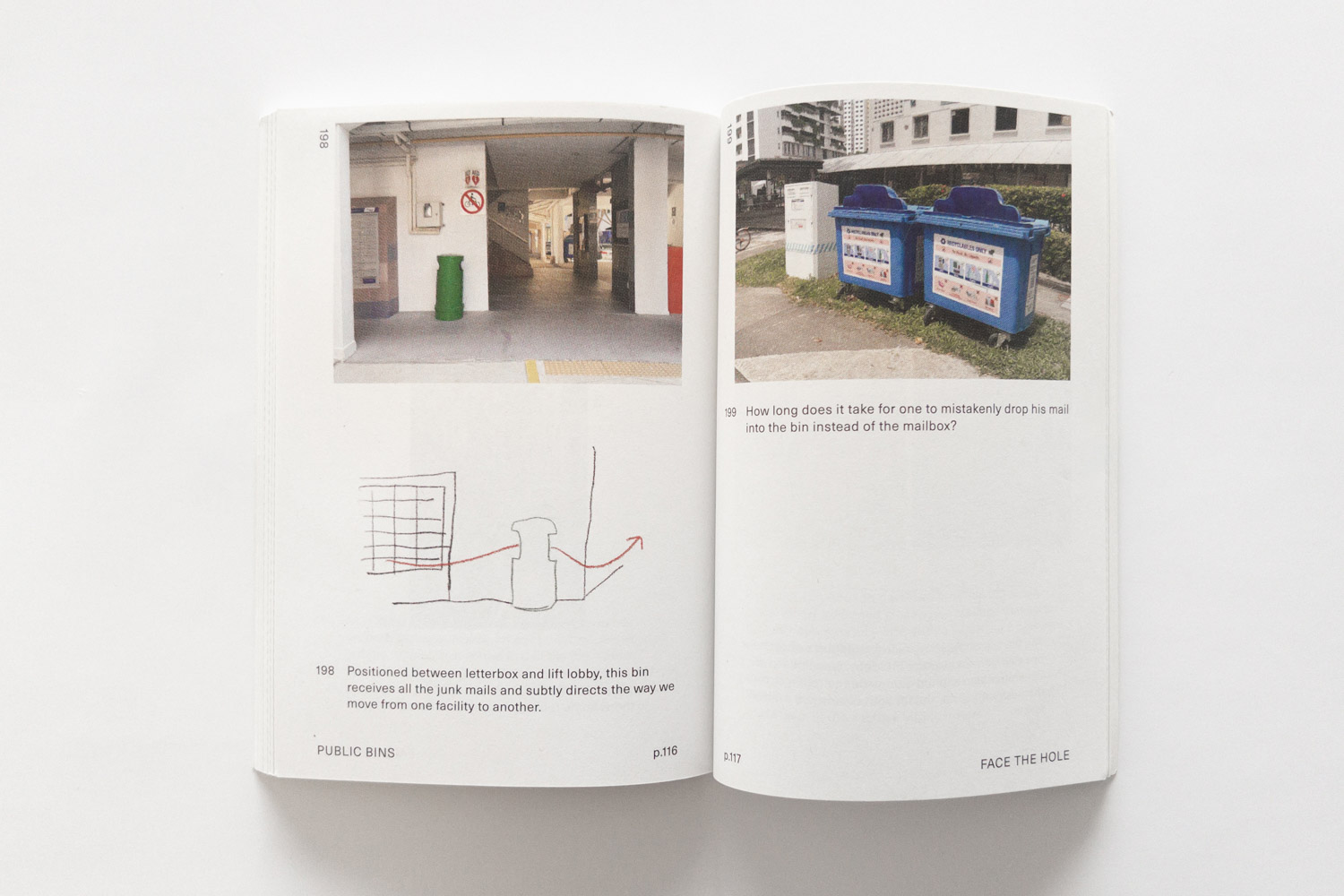THE FIRST REPORT IN THE ‘STREET REPORT’ SERIES BY ATELIER HOKO DELVES INTO DIVERSE PERSPECTIVES OF PUBLIC BINS IN SINGAPORE AND HOW INDIVIDUALS INTERACT WITH THEM
TEXT: NATHATAI TANGCHADAKORN
PHOTO: KETSIREE WONGWAN
(For Thai, press here)
Street Report 1: Public Bins
Temporary Press, 2022
Offset printing
12.6 x 17.6 cm
137 pages
ISBN 978-981-18-4136-1
Waste bins are understandably unappealing to most people. In urban environments, ‘public waste bins’ assume a peculiar status. They are needed but undesirable at the same time. Some appreciate the idea of a city having strategically designated and easily accessible locations for garbage disposal. However, there is hesitation when it comes to areas frequently visited becoming unsightly due to the presence of garbage bins. The question at hand is: What truly defines a waste bin? Is it classified as such once it stores discarded items, the functional role it plays, or the surrounding elements, such as boxes, baskets, or plant pots, that contribute to its definition as a waste bin?
‘Public Bins’ is one of the books from the Street Report series by Atelier HOKO, a Singapore-based creative studio founded by Alvin Ho and Clara Koh. The installment demonstrates Ho and Koh’s fascination with the multifaceted stories woven around ordinary items and their interest in the general public’s perceptions and behaviors towards these objects. Atelier HOKO’s exploration of the intricate relationship between people, objects, and spaces unveils a narrative of interconnectedness that is becoming less and less sensible.
Atelier HOKO started the Street Report series to explore various objects found on the streets of Singapore. And this particular volume covers public waste bins. Through a thoughtfully curated collection of photographs, the book looks into the places and roles of waste bins in Singapore streets and the ways in which individuals interact with them, capturing users’ insights reflected in their actions. The content of the book presents diverse perspectives on ‘public – waste – bins.’ The visual exploration of waste bins in Singapore is organized into 17 chapters, spanning over 100 pages. The book concludes with strategically placed blank pages, inviting readers to jot down their notes, whether they are inspirations or new ideas that may arise from reading this insightful research.
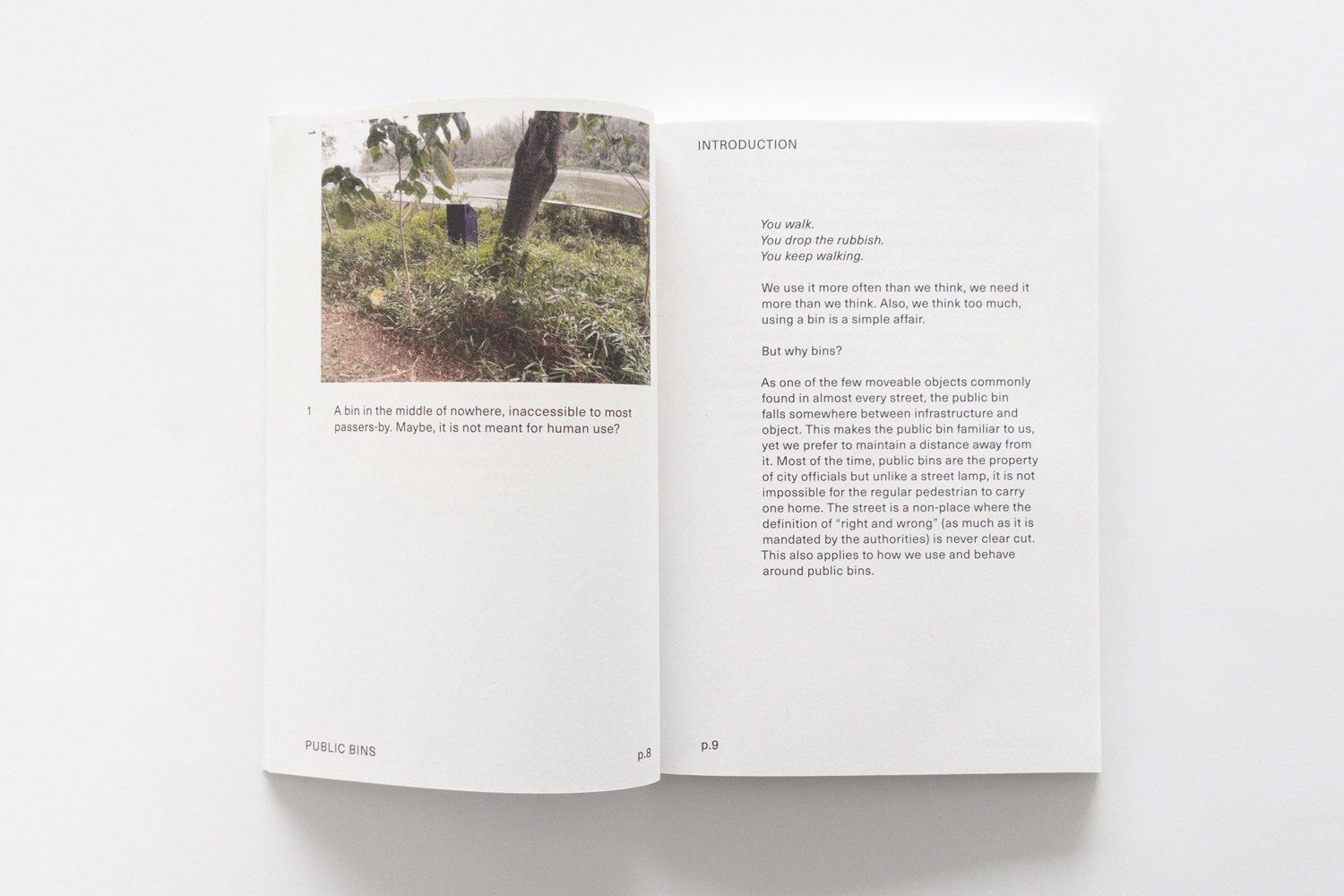
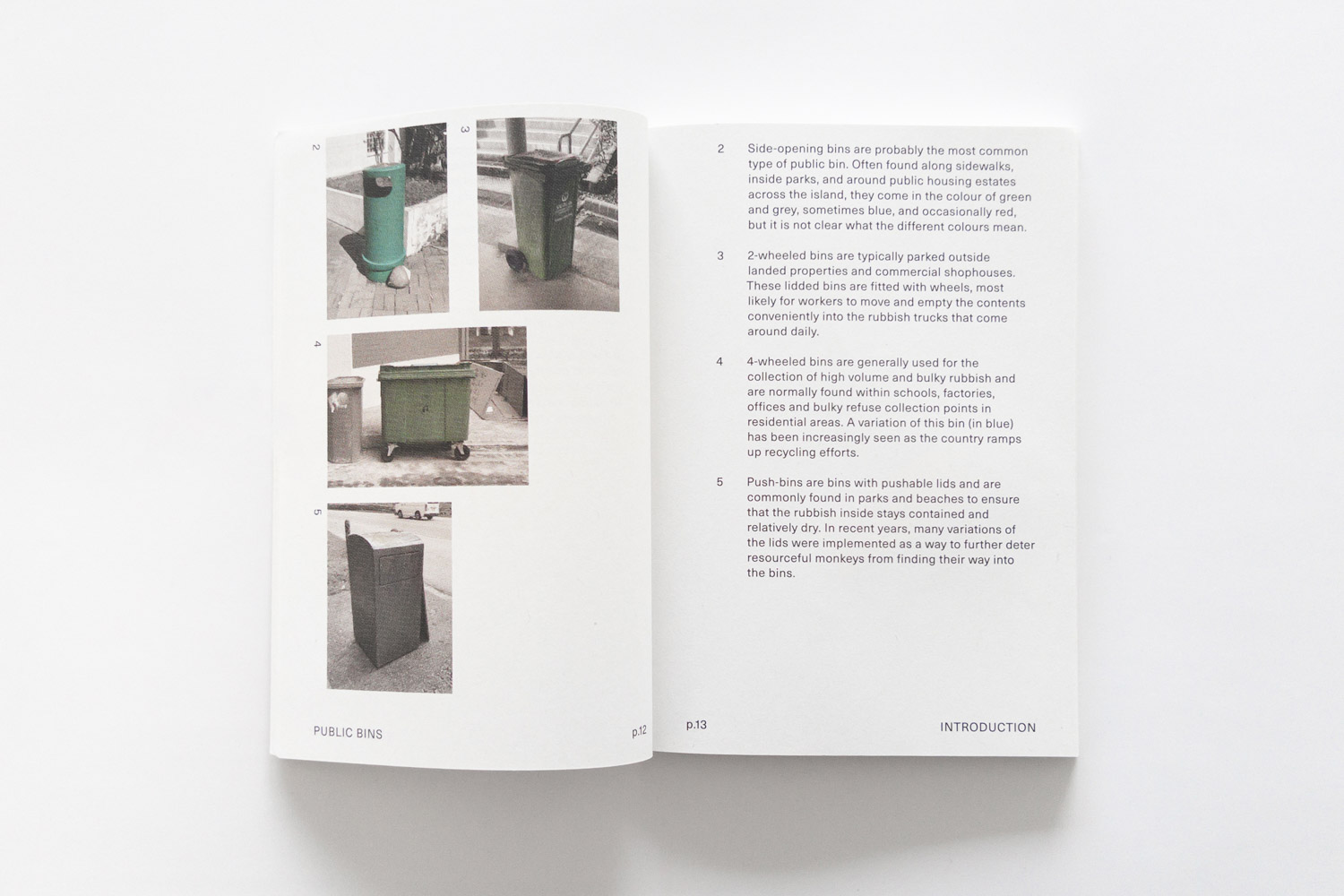
In the book, photographs of public waste bins are broadly categorized into four types: side-opening bins, 2-wheeled bins, 4-wheeled bins, and push bins. These photographs are dispersed throughout the chapters and footnotes. Certain types of waste bins receive special attention and are portrayed through sketched diagrams, aiming to enhance the reader’s understanding of their surroundings. For example, the opening chapter, ‘THE STARTER,’ presents an interesting aspect of the ‘first piece of trash’ that appears outside of the waste bin. The first chapter encourages us to contemplate the relationship between the shapes of waste and the act of discarding them into bins. This leads to content in other chapters whose discussions range from the patterns of waste to the ways of discarding it, all the way to the characteristics of the relationship between spaces and public waste bins, and how the bins become a factor that defines the physical boundary of a specific area.
Upon a casual glance, we might encounter numerous amusing images, and delving into the details reveals that certain sections of the content continue to evoke laughter (of course, considering it’s a book about public waste bins, it wouldn’t necessarily make one rack their brain reading it).

Presently, the complete compilation of Street Report spans four volumes, each sequentially titled: 1. ‘Public Bins,’ 2. ‘Hooks and Holes,’ 3. ‘Ding Ding’ (Trams in Hong Kong), and 4. ‘Seatings,’ all equally delightful. For those who have been following the series, imagine the intrigue these books could unravel should the investigative lens shift from Singapore to Thailand.

atelierhoko.com
facebook.com/atelierhoko
instagram.com/street_report_world


